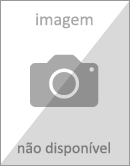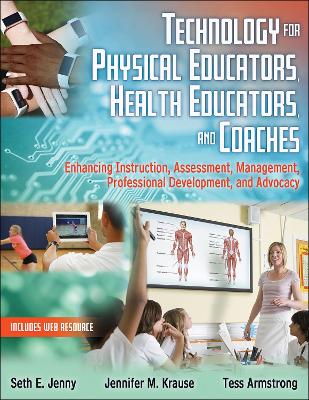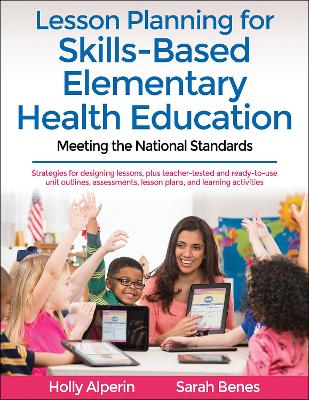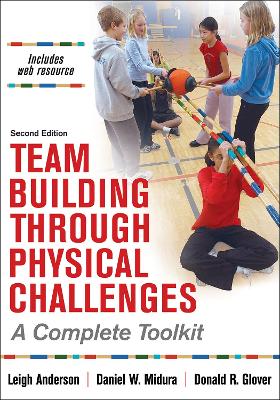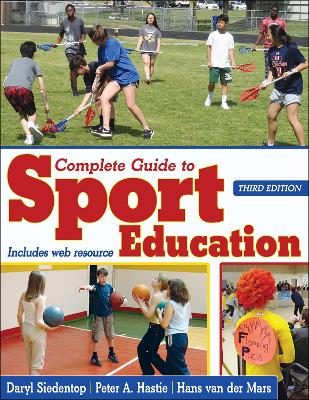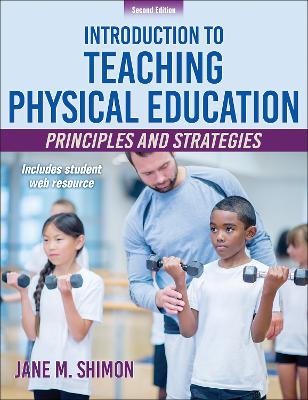Essentials of Teaching Health Education
 -15%
portes grátis
-15%
portes grátis
Essentials of Teaching Health Education
Curriculum, Instruction, and Assessment
Benes, Sarah; Alperin, Holly
Human Kinetics Publishers
02/2021
360
Mole
Inglês
9781492593560
15 a 20 dias
998
Chapter 1. The Role of Health Education
Health as a Continuum
The Need for Health Education
Using Resources in School-Based Health Education
Designing Health Education
Improving Health Outcomes
Summary
Chapter 2. Understanding a Skills-Based Approach
Components of Skills-Based Health Education
Skills-Based Health Education in Practice
Support for Skills-Based Health Education
Summary
Chapter 3. Equity and Justice in Health Education
Health Disparity and Health Inequity
Factors Contributing to Inequities
Social Justice and Health Equity
Social Justice Practices for Your Classroom
Summary
Chapter 4. Developing Health-Literate Individuals
Components of Health Literacy
Continuum of Health Literacy
Developing Health Literacy as an Asset
Establishing Health Literacy for Life
Summary
Chapter 5. Examining Student Motivation
Theories of Motivation
Developmental Levels and Motivation
General Considerations Across Age Levels
Summary
Chapter 6. Making Cross-Curricular Connections
A Coordinated Approach to Student Success
Shaping Local Wellness Policies
Making Interdisciplinary Connections for School Improvement
Summary
Part II. Teaching to the National Health Education Standards
Chapter 7. Accessing Valid and Reliable Information, Products, and Services
Step 1: Introduce the Skill
Step 2: Present Skill Cues/Critical Elements
Step 3: Model the Skill
Step 4: Practice and Feedback
Step 5: Assess the Skill and Support Transfer
Summary
Chapter 8. Analyzing Influences
Step 1: Introduce the Skill
Step 2: Present Skill Cues/Critical Elements
Step 3: Model the Skill
Step 4: Practice and Feedback
Step 5: Assess the Skill and Support Transfer
Summary
Chapter 9. Interpersonal Communication
Step 1: Introduce the Skill
Step 2: Present Skill Cues/Critical Elements
Step 3: Model the Skill
Step 4: Practice and Feedback
Step 5: Assess the Skill and Support Transfer
Summary
Chapter 10. Decision Making
Step 1: Introduce the Skill
Step 2: Present Skill Cues/Critical Elements
Step 3: Model the Skill
Step 4: Practice and Feedback
Step 5: Assess the Skill and Support Transfer
Summary
Chapter 11. Goal Setting
Step 1: Introduce the Skill
Step 2: Present Skill Cues/Critical Elements
Step 3: Model the Skill
Step 4: Practice and Feedback
Step 5: Assess the Skill and Support Transfer
Summary
Chapter 12. Self-Management
Step 1: Introduce the Skill
Step 2: Present Skill Cues/Critical Elements
Step 3: Model the Skill
Step 4: Practice and Feedback
Step 5: Assess the Skill and Support Transfer
Summary
Chapter 13. Advocacy
Step 1: Introduce the Skill
Step 2: Present Skill Cues/Critical Elements
Step 3: Model the Skill
Step 4: Practice and Feedback
Step 5: Assess the Skill and Support Transfer
Summary
Part III. Developing Curricula and Assessments
Chapter 14. Using Data to Inform Curriculum Planning Compiling Functional Information
Gathering and Understanding Data
Interpreting Data to Make Decisions on Curriculum
Using Data to Build Support for Health Education
Summary
Chapter 15. Eight Steps for Curriculum Development
Step 1: Get to Know the Students and the Community
Step 2: Formulate Goals
Step 3: Design Benchmark Assessments
Step 4: Determine Health Topics, Functional Information, and Skills
Step 5: Create a Scope and Sequence
Step 6: Develop Unit Plan, Objectives, and Outcomes
Step 7: Develop Unit Assessments
Step 8: Create Lesson Plans
Summary
Chapter 16. Designing Meaningful Assessments
Purpose of Assessment
Types of Assessment
Authentic Assessment
Rubrics and Grading
Constructive Feedback
Summary
Part IV. Strategies for Effective Instruction
Chapter 17. Creating a Positive Learning Environment
Know Yourself
Have a Plan
Build Relationships With Your Students
Establish Classroom Norms, Consequences, and Reward Systems
Foster Student Leadership and Involvement
Be a Positive Role Model
Summary
Chapter 18. Implementing a Skills-Based Approach
Facilitate Learning Experiences
Format Lessons to Support Skill Development and Knowledge Acquisition
Provide Engaging, Relevant Experiences
Foster Participation and Active Learning
Provide Opportunities for Self-Reflection, Internalization, and Personalization
Provide Opportunities for Skill Development
Summary
Chapter 19. Meeting the Unique Needs of Teaching Elementary Health Education
Making Time for Health Education
Considerations for the Elementary Level
Using Children's Literature to Support Health Education
Engaging Families and the Community
Summary
Chapter 20. Professional Development and Advocacy
Staying Current and Relevant
Engaging in Professional Development Opportunities
Developing a Personalized Professional Development Plan
Using What You Learn
Advocating for Health Education
Summary
Chapter 1. The Role of Health Education
Health as a Continuum
The Need for Health Education
Using Resources in School-Based Health Education
Designing Health Education
Improving Health Outcomes
Summary
Chapter 2. Understanding a Skills-Based Approach
Components of Skills-Based Health Education
Skills-Based Health Education in Practice
Support for Skills-Based Health Education
Summary
Chapter 3. Equity and Justice in Health Education
Health Disparity and Health Inequity
Factors Contributing to Inequities
Social Justice and Health Equity
Social Justice Practices for Your Classroom
Summary
Chapter 4. Developing Health-Literate Individuals
Components of Health Literacy
Continuum of Health Literacy
Developing Health Literacy as an Asset
Establishing Health Literacy for Life
Summary
Chapter 5. Examining Student Motivation
Theories of Motivation
Developmental Levels and Motivation
General Considerations Across Age Levels
Summary
Chapter 6. Making Cross-Curricular Connections
A Coordinated Approach to Student Success
Shaping Local Wellness Policies
Making Interdisciplinary Connections for School Improvement
Summary
Part II. Teaching to the National Health Education Standards
Chapter 7. Accessing Valid and Reliable Information, Products, and Services
Step 1: Introduce the Skill
Step 2: Present Skill Cues/Critical Elements
Step 3: Model the Skill
Step 4: Practice and Feedback
Step 5: Assess the Skill and Support Transfer
Summary
Chapter 8. Analyzing Influences
Step 1: Introduce the Skill
Step 2: Present Skill Cues/Critical Elements
Step 3: Model the Skill
Step 4: Practice and Feedback
Step 5: Assess the Skill and Support Transfer
Summary
Chapter 9. Interpersonal Communication
Step 1: Introduce the Skill
Step 2: Present Skill Cues/Critical Elements
Step 3: Model the Skill
Step 4: Practice and Feedback
Step 5: Assess the Skill and Support Transfer
Summary
Chapter 10. Decision Making
Step 1: Introduce the Skill
Step 2: Present Skill Cues/Critical Elements
Step 3: Model the Skill
Step 4: Practice and Feedback
Step 5: Assess the Skill and Support Transfer
Summary
Chapter 11. Goal Setting
Step 1: Introduce the Skill
Step 2: Present Skill Cues/Critical Elements
Step 3: Model the Skill
Step 4: Practice and Feedback
Step 5: Assess the Skill and Support Transfer
Summary
Chapter 12. Self-Management
Step 1: Introduce the Skill
Step 2: Present Skill Cues/Critical Elements
Step 3: Model the Skill
Step 4: Practice and Feedback
Step 5: Assess the Skill and Support Transfer
Summary
Chapter 13. Advocacy
Step 1: Introduce the Skill
Step 2: Present Skill Cues/Critical Elements
Step 3: Model the Skill
Step 4: Practice and Feedback
Step 5: Assess the Skill and Support Transfer
Summary
Part III. Developing Curricula and Assessments
Chapter 14. Using Data to Inform Curriculum Planning Compiling Functional Information
Gathering and Understanding Data
Interpreting Data to Make Decisions on Curriculum
Using Data to Build Support for Health Education
Summary
Chapter 15. Eight Steps for Curriculum Development
Step 1: Get to Know the Students and the Community
Step 2: Formulate Goals
Step 3: Design Benchmark Assessments
Step 4: Determine Health Topics, Functional Information, and Skills
Step 5: Create a Scope and Sequence
Step 6: Develop Unit Plan, Objectives, and Outcomes
Step 7: Develop Unit Assessments
Step 8: Create Lesson Plans
Summary
Chapter 16. Designing Meaningful Assessments
Purpose of Assessment
Types of Assessment
Authentic Assessment
Rubrics and Grading
Constructive Feedback
Summary
Part IV. Strategies for Effective Instruction
Chapter 17. Creating a Positive Learning Environment
Know Yourself
Have a Plan
Build Relationships With Your Students
Establish Classroom Norms, Consequences, and Reward Systems
Foster Student Leadership and Involvement
Be a Positive Role Model
Summary
Chapter 18. Implementing a Skills-Based Approach
Facilitate Learning Experiences
Format Lessons to Support Skill Development and Knowledge Acquisition
Provide Engaging, Relevant Experiences
Foster Participation and Active Learning
Provide Opportunities for Self-Reflection, Internalization, and Personalization
Provide Opportunities for Skill Development
Summary
Chapter 19. Meeting the Unique Needs of Teaching Elementary Health Education
Making Time for Health Education
Considerations for the Elementary Level
Using Children's Literature to Support Health Education
Engaging Families and the Community
Summary
Chapter 20. Professional Development and Advocacy
Staying Current and Relevant
Engaging in Professional Development Opportunities
Developing a Personalized Professional Development Plan
Using What You Learn
Advocating for Health Education
Summary


